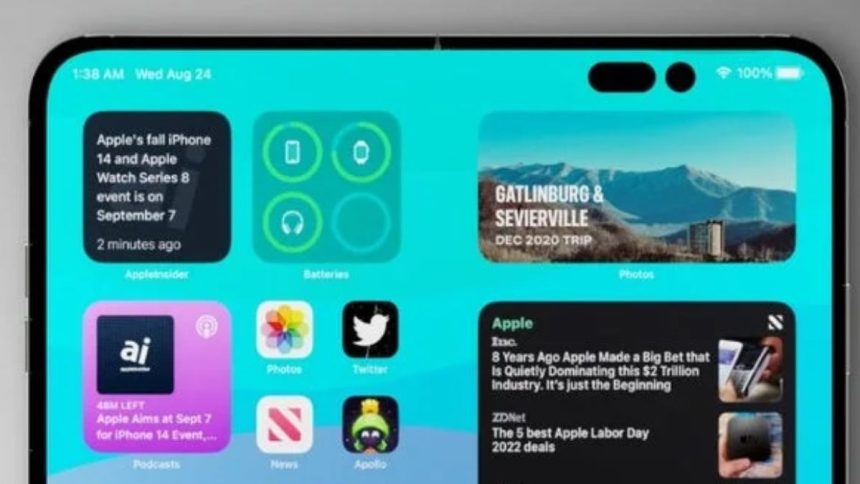Investment firm JPMorgan has released a research note forecasting that Apple’s first foldable iPhone, expected to debut in September 2026 during the iPhone 18 launch event, will significantly boost the foldable smartphone sector. Priced at around $1,999, the “iPhone Fold” is predicted to start with sales in the low teens of millions in 2027, ramping up to approximately 45 million units by 2028. This surge would more than double current global foldable sales, which are projected at about 19.8 million units in 2025, positioning Apple as a dominant player in this niche.
The foldable iPhone is rumored to feature a book-style fold design with a 7.8-inch internal display and a 5.5-inch external screen. Unlike existing foldables, Apple aims to deliver a crease-free or nearly crease-free inner display, addressing one of the main consumer concerns. The device is also expected to include a durable hinge made with “Liquid Metal,” a titanium frame, and a thin chassis. Notably, Touch ID may return on this model, replacing Face ID, which reportedly is a strategic choice for foldable form factors.

JPMorgan sees this introduction as a major revenue opportunity for Apple, estimating a $65 billion market potential and a high-single-digit earnings boost in the medium term. The company’s research suggests that while the iPhone 17 series launching in 2025 might offer limited excitement, consumer focus and enthusiasm will quickly shift toward the foldable iPhone line in 2026 and beyond.
Apple’s entry is expected to elevate foldables from a niche category into mainstream appeal. JPMorgan highlights Apple’s careful study of competitors, including reverse-engineering existing foldable models and addressing their weaknesses such as durability and crease visibility. The firm predicts that Apple’s foldable will command substantial profits due to an estimated bill of materials around $759, coupled with the strong brand appeal Apple carries.
Overall, JPMorgan positions the foldable iPhone as a defining product for the smartphone sector in the coming years, with significant sales growth and revenue impact that could reshape the foldable market landscape by 2028.






